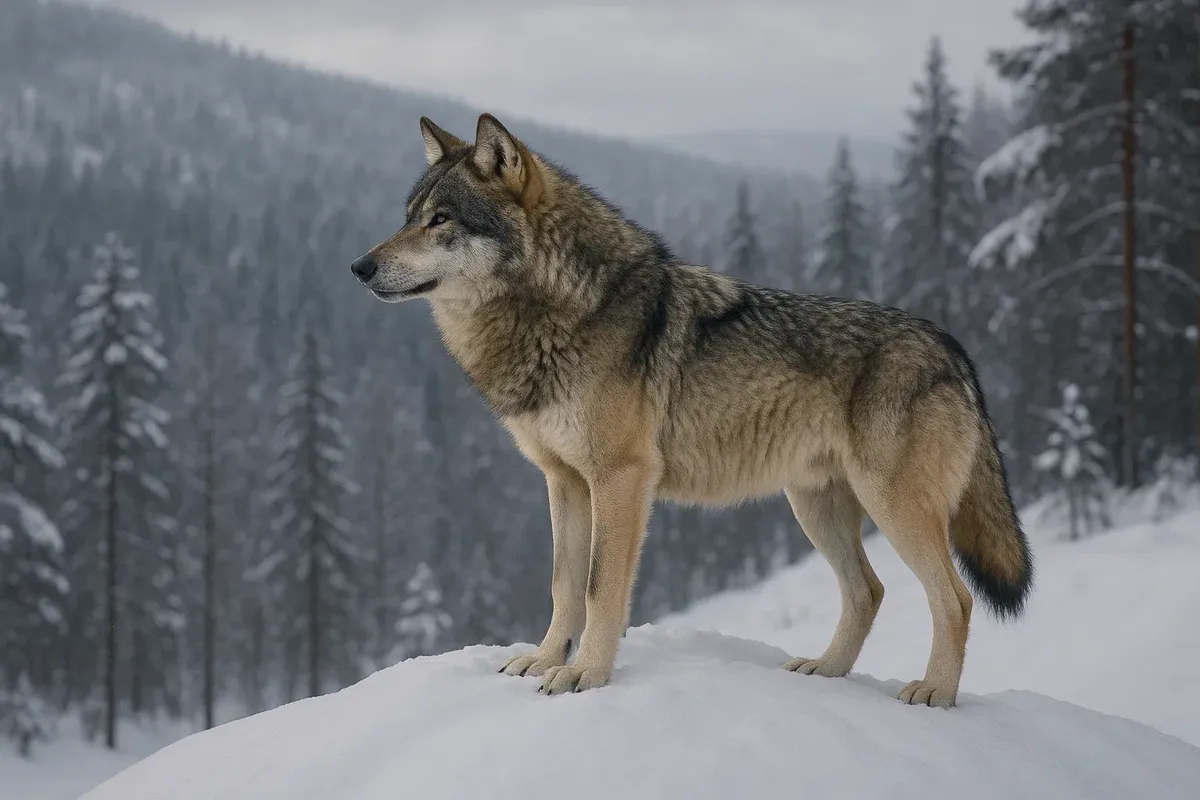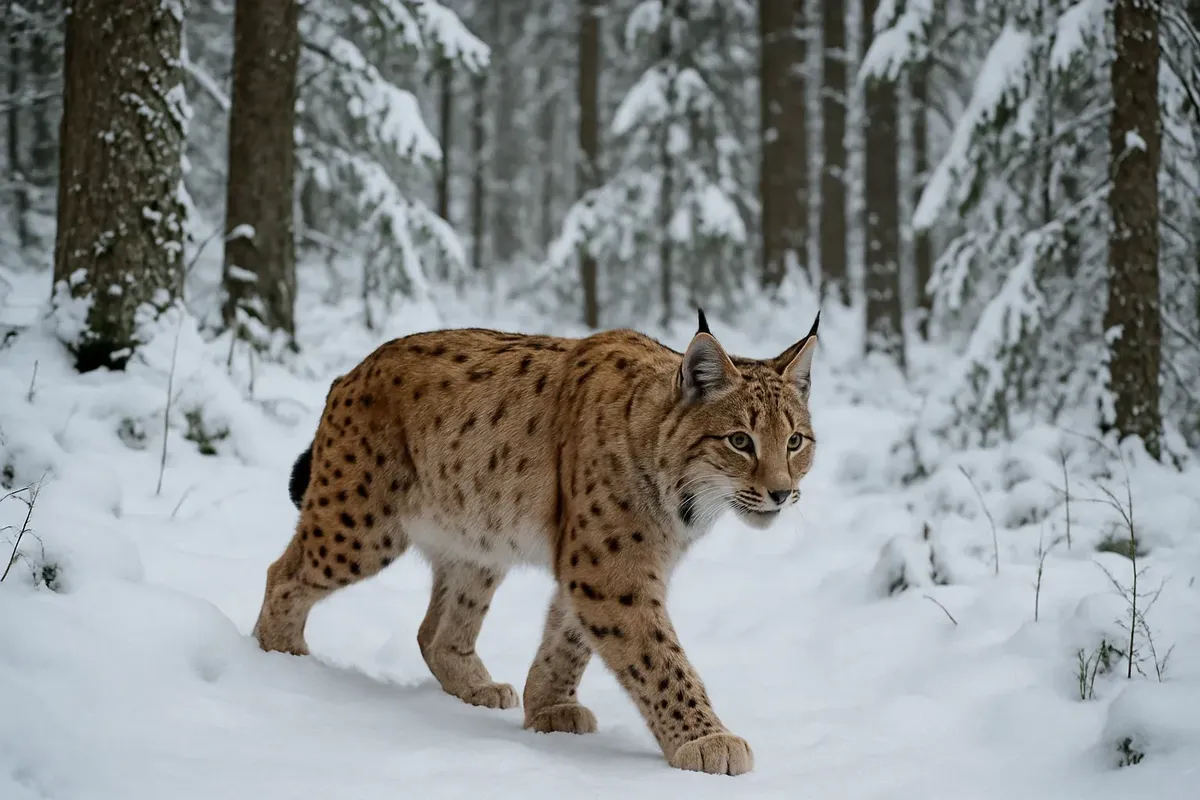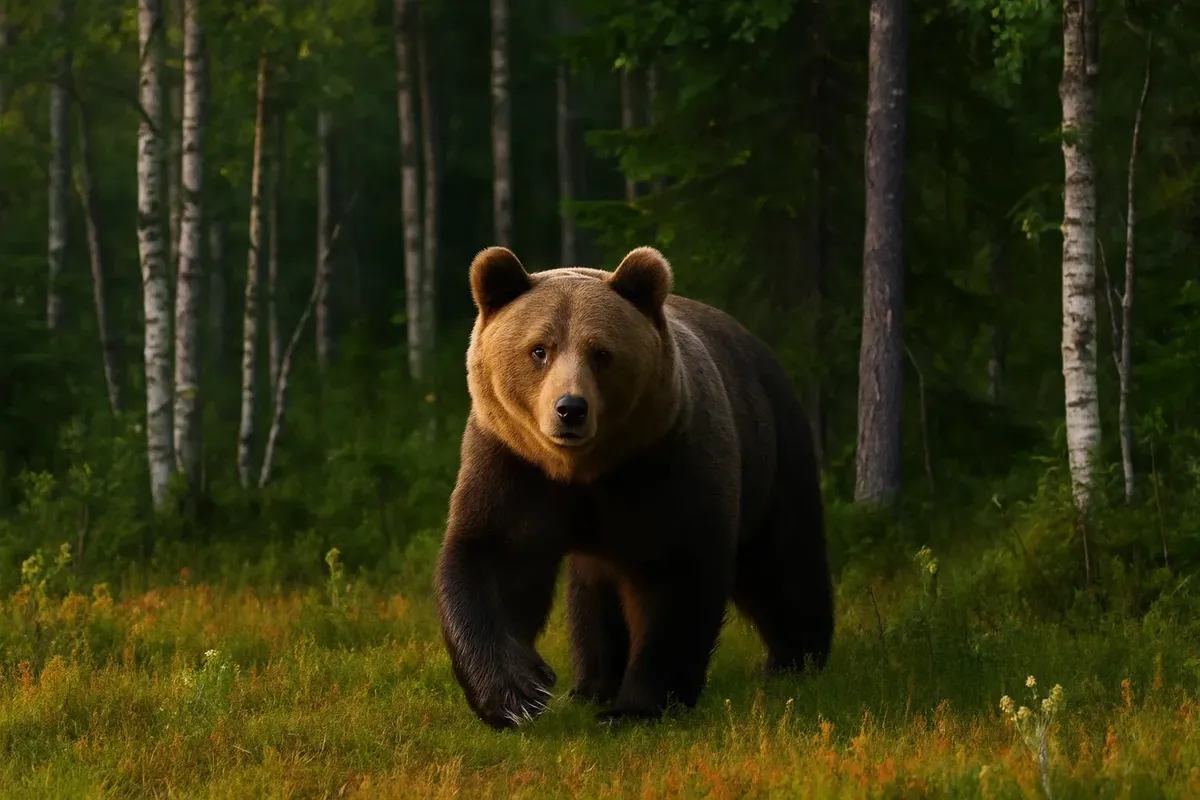🐺 Wild predators of Norway: wolves, lynxes and bears
Norway is absolutely beautiful, with its stunning natural landscapes. But did you know that behind this beauty lie large predators living in the wild? Wolves, lynxes and bears are amazing creatures, aren't they? They can inspire feelings of awe and caution in us. It's always a good idea to find out who they are, where you can find them and how to behave if you encounter them.
📖 What you will learn from this article:
- Large predators of Norway: wolf, lynx and bear.
- Where these animals live.
- Safety rules when meeting them.
- Tips for observing and organizing safe tours.
🐺 The wolf is a symbol of the untamed beauty of the Scandinavian wilderness.
It's such a clever and careful creature, and it usually keeps a low profile around humans.
🔎 Description of the wolf:
- You'll be pleased to know that it can grow up to 150 cm long and weigh up to 60 kg.
- Appearance: lovely grey-brown fur, cute pointed ears and bright, piercing eyes.
📍 Wolf habitats:
- The main territories are the beautiful border areas in eastern Norway. These are the Hedmark, Østfold and Akershus regions.
- The largest population is found along the border with Sweden, which is really interesting!

I totally understand if you're wondering whether wolves might be dangerous.
Wolves are actually really shy and only go after people if they're provoked. And don't worry, attacks on humans are extremely rare.
Handy safety tips to keep you safe when you meet a wolf:
- Please don't approach or try to feed the animal.
- Please try to speak calmly and confidently, and gradually back away.
- When you're out hiking in the forest, please keep your dogs on a leash to keep everyone safe.
🐾The Eurasian lynx is a secretive and graceful creature, and the largest member of the cat family in Europe.
🔎 Description of the lynx:
- You'll be pleased to know that it can grow up to 130 cm long and weigh between 15 and 30 kg.
- Appearance: cute spotted fur, adorable tufts on the ears, and a short, fluffy tail.
📍 Habitat of lynxes:
- The beautiful forests of central and eastern Norway, especially the regions of Hedmark, Oppland and Trøndelag, are truly something special.
- They like to be in dense forests where they can avoid open spaces and people.

I totally understand if you're wondering whether lynxes might be dangerous.
Lynxes are skittish by nature and will do their best to avoid humans. In fact, they almost never come into contact with people.
Here are some handy safety tips for when you might cross paths with a lynx:
- Just stay calm and don't move suddenly, okay?
- Please don't chase or corner the animal, as this could upset it.
- The lynx will leave on its own if it senses your presence, so you can relax and enjoy the experience.
- Hey, I just wanted to let you know about this really cool thing I came across, which is about bears in Norway.
🐻The brown bear is Norway's largest predator, and while it's not often seen in the wild, it's a really amazing creature to discover!
🔎 Description of the bear:
- Size: up to 300 kg in weight and 2 m in height when standing on its hind legs – isn't that amazing?!
- Appearance: think thick brown fur, powerful paws and a big head!
📍 Bear habitats:
- The lovely areas of Hedmark, Finnmark and Trøndelag in the border regions with Sweden and Finland are especially special places.
- They really like dense forests and inaccessible mountain areas.
⚠️ Are bears dangerous?
Bears are generally pretty calm creatures, but they can be strong and dangerous predators, especially if they think their cubs are in trouble.

Just a friendly reminder to stay safe and follow these important rules when you're out and about and you might come across a bear:
- Please, don't go up to them to take their picture.
- Please try to speak calmly, move slowly and don't turn your back.
- If the bear seems aggressive, please don't run away or shout. Hey, why not try to make yourself look bigger and louder while you slowly back away?
Let me tell you where you can go to see predators in their natural habitat and feel totally safe!
While the chances of running into some of these big guys in Norway might be slim, there are awesome tours and special spots where you can see them in their natural habitat without worrying.
🥾 Organised tours:
- In the lovely Hedmark and Østfold regions, you can go on super-fun excursions where you'll have an experienced guide show you where predators live and tell you about their signs of life.
- Our friendly guides will make sure you're safe and they'll share their amazing knowledge about animal behaviour with you.
🔭 What we saw from our hides:
- You know, in some places (like lovely parks and nature reserves near the border with Sweden), there are special hides where you can go to see predators. It's so lovely to see them there regularly.
Some handy tips for your visit to the home of our friendly neighbourhood predators.
- Please, please make sure you always take a map and a navigation device with you, OK?
- Please stay on the marked trails and follow the signs, and I'm sure you'll have a great time!
- It's always best to avoid hiking alone, especially at night.
- Please, please don't leave food or rubbish in the rest areas, guys!
- Please keep your dogs on a leash to avoid any conflicts with other animals.
Let me share some tips on how to capture the beauty of predators through your camera lens.
- If you're worried about getting too close, don't be! Use telephoto lenses (300–600 mm) to shoot from a safe distance.
- If you're wondering when the best time to go shooting is, I would say that early morning or evening are great options.
- Just stay calm and relaxed, and try not to make any sudden moves.
You are such a kind and considerate person, and your attitude towards wildlife is just wonderful!
It's important to remember that predators are a vital part of Norway's ecosystem, so let's show them the respect and care they deserve.
- It's important to let nature take its course.
- So why not support environmentally responsible tourism?
- If you see anything a bit strange or if you spot an animal that needs your help, please tell the local nature conservation authorities.
Norway's large predators are such amazing and beautiful creatures, and they play such an important part in the country's wildlife. I would love for you to be able to enjoy the forests and mountains just as much as I do. To help you do that, I've created some simple safety and ethical guidelines. If you follow them, you can travel safely and learn more about how these majestic animals live.
We know how important it is to enjoy nature while staying safe and in harmony with Norway's wildlife, and we're here to help make that happen!





1 comment
Log in to leave a comment
Hvilket rovdyr ville dere helst sett i naturen, og hvor ville dere gå for å ha størst sjanse til å oppleve det? 🤔